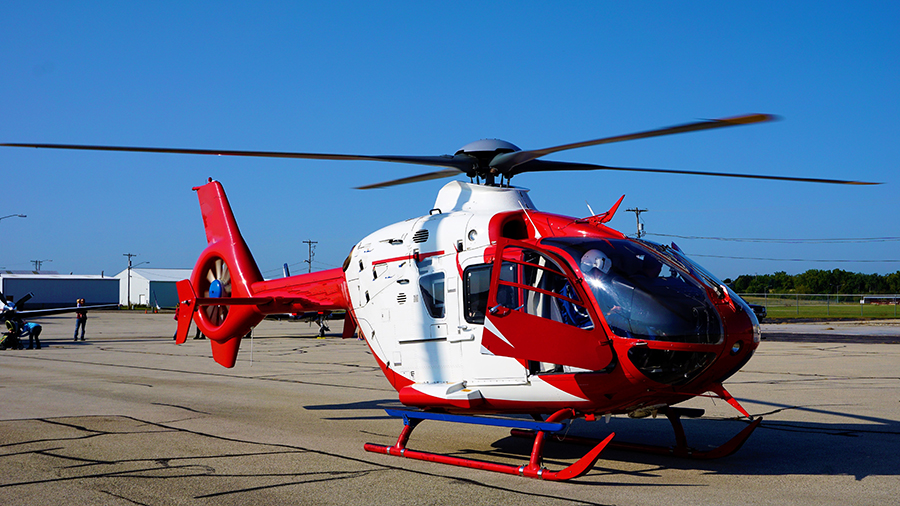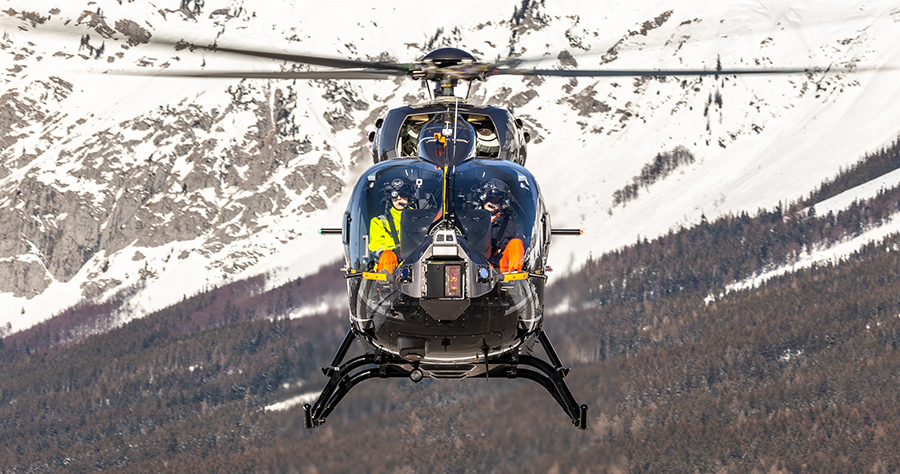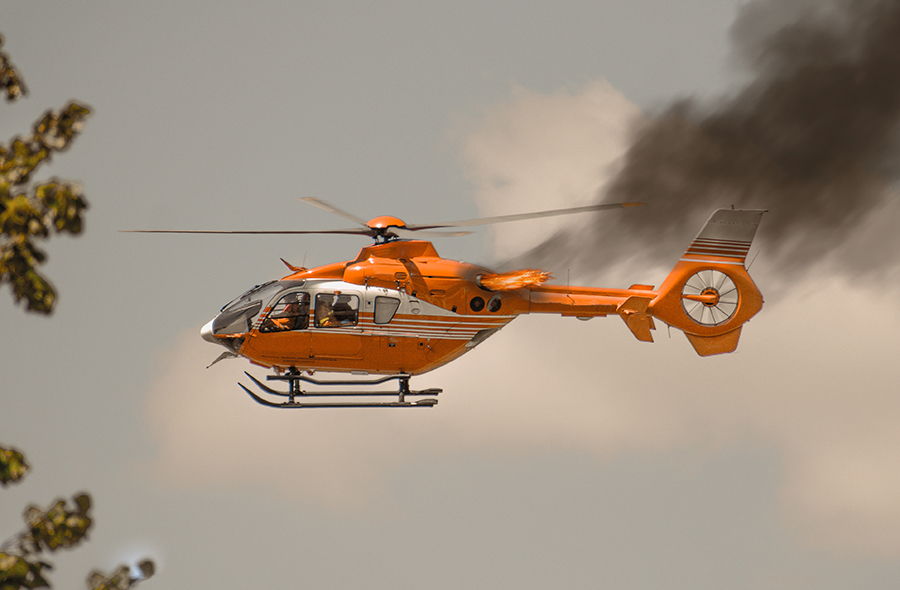-
Who Can Learn To Fly Helicopters?
-
How Do You Fly A Helicopter?
-
Difficult Aspects Of Helicopter Flying
- Hovering
- Taking Off
- Landing In Confined Areas
- Sloping Ground Maneuvers
- Helicopter Navigation
-
Easy Aspects Of Helicopter Flying
- Landing At An Airfield
- Crosswind Landings
- Low Level Maneuvering
-
Similarities And Differences Between Helicopter And Airplane Flying
- Straight and Level Flying
- Preflight Checks
- Emergencies
-
Conclusion
When I tell people that I’m a helicopter pilot they are often very impressed. This is primarily because they seem to have an idea that helicopters must be extremely difficult to fly. They usually say something like this: “Helicopters, wow! You must have incredibly good coordination. They’re really hard to fly, aren’t they?”
Actually, helicopters are not all that difficult to fly. Anyone who has enough coordination to drive a car can probably learn to fly a helicopter. There are some aspects of the learning process which are difficult, it is true, but some are surprisingly easy. And learning to fly a helicopter is no harder than learning to fly an airplane – although it is very different.
Let’s now take a look at all these different aspects of helicopter flying…
Who Can Learn To Fly Helicopters?
Most people can learn to fly a helicopter. If you can drive a car, or ride a bike, or do anything else requiring a fair degree of coordination, then you could probably learn to fly a rotary aircraft. But it will probably take you longer than learning to drive a car. Most students take about 60 -70 flying hours to acquire their Private Pilot’s License for Helicopters, although the legal minimum is only 40 hours, and occasionally someone will actually manage it in that time. But given enough time, almost anyone can do it.
How Do You Fly A Helicopter?
Despite the fact that helicopter flying is not that difficult overall, there are certain aspects of it that are not easy and require a great deal of practice. In a moment, we will look at each of these in turn. But firstly, you need to understand how the pilot controls a helicopter.
Briefly, the pilot has three controls that are used to fly the helicopter – the cyclic, the collective, and the yaw pedals. The cyclic enables you to move the helicopter forwards, backward, and sideways. The collective controls the height and moves the helicopter up and down. The yaw pedals keep the aircraft in balance.
This sounds quite straightforward. But the difficulty is that each control can and does affect the others, so all three have to be coordinated. This is probably the reason for the reputation helicopters have for being difficult to fly.
Difficult Aspects Of Helicopter Flying
So let’s now take a look at the things which are difficult in helicopter flying….
Hovering
Most new rotary flying students struggle with learning to hover. This is the one maneuver in a helicopter that really is different from any other type of flying. There is nothing quite like it in any other kind of aircraft, and it certainly does take most people quite a while to master. And unfortunately, you can’t do that much flying in a helicopter, and certainly not fly one solo, until you can do it well, since hovering is the first thing you have to do when you lift off from the ground.
The problem is that hovering requires very fine coordination of all three controls – the cyclic, collective, and pedals. These three all affect each other, and all have a certain amount of lag before they act, and a different amount of lag in each case!
Students learning to hover start with one control at a time, then move on to two of them together and finally practice with all three. And practice is essentially what is needed. I have never yet met anyone who couldn’t eventually learn to hover a helicopter. Some people take longer than others to acquire the skill, but that applies to all aspects of aviation. But hovering requires the pilot to move all three controls at the same time in order to keep the helicopter stationary above the ground. This takes a great deal of practice, and some students, who have mastered other aspects of helicopter flying, despair at ever managing to crack hovering.
However, as with many things in aviation, once you have grasped hovering, you wonder what you found so difficult. Indeed, after a while, it becomes quite natural, and it is a great deal of fun!
Taking Off
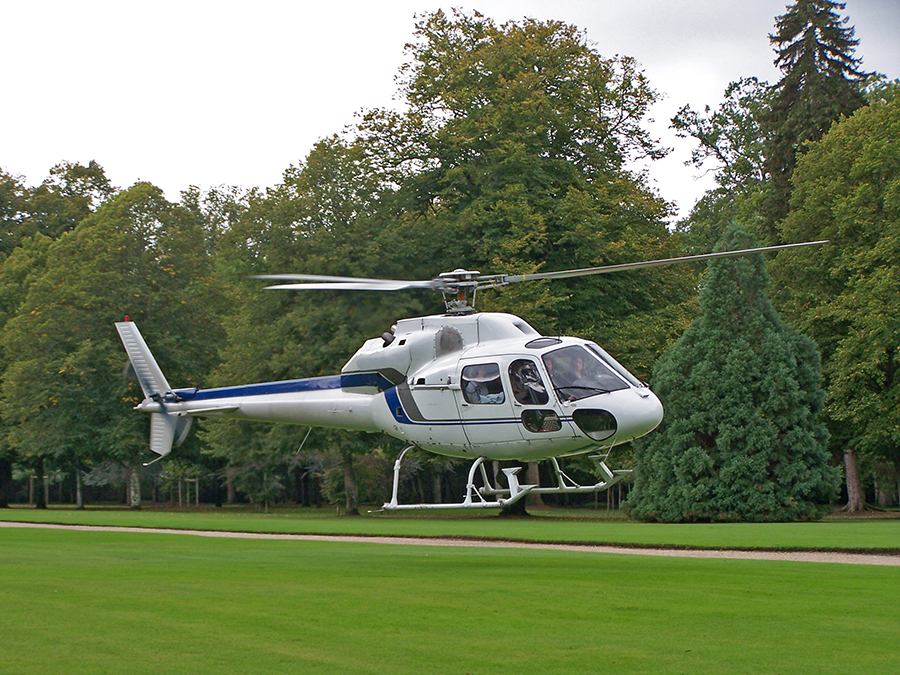
Taking off in an airplane is quite easy. But in a helicopter, you need to move slowly along the ground at a height of about ten feet, gradually picking up speed until it is safe to raise the collective and allow the helicopter to climb. This is something of an oversimplification, but the important point is that it again requires a lot of different movements of the controls, and therefore a great deal of practice.
Can’t you just lift the helicopter vertically into the air, as you sometimes see happening in the movies? Yes, you can, but for various reasons, this is not the safest way to depart, as it would make an emergency landing very difficult if anything were to go wrong. So you never take off this way unless it is absolutely necessary.
Landing In Confined Areas
We all know that helicopters do not need runways in order to land. So this should make landing them easy, shouldn’t it? Well, in certain circumstances it does of course. But landing a helicopter in a confined area is actually very difficult. It requires precise use of the controls, and the ability to hover the helicopter without moving it at all in the horizontal plane. For this reason it is something which is not learned until quite late on in the Private Pilots’ course.
Sloping Ground Maneuvers
Helicopters can take off and land on sloping ground, unlike other aircraft. But this is a difficult maneuver and is one of the last lessons on the Private Pilot Course. The main problem is that you need to make sure everything is done very slowly and carefully, or it is possible to turn the helicopter over on either landing or take-off. You really need to have extremely good coordination of all the controls, and this yet again takes a lot of practice. But again, it is not impossible, and everyone manages it eventually.
Helicopter Navigation
Much helicopter navigation is done using maps and aviation charts. Even in these days of GPS, a map is often necessary, particularly if you are planning on landing at a specific place such as a hotel or someone’s house. So you need to be able to navigate by map and compass in the traditional manner. This is difficult in a helicopter, simply because the pilot cannot take his or her hands off the controls. In an airplane, it is possible to trim the controls, and remove your hands for a short period, in order to fold a map, write something down, or similar. But in a small helicopter, this is not possible, and hands-on flying is required the whole time – though it should be said that this is not true of some of the larger types of helicopters used for activities such as air-sea rescue. So advance planning is essential, and the whole thing can be quite difficult.
Easy Aspects Of Helicopter Flying
Despite the fact that some parts of helicopter flying are actually very difficult, this is compensated for by the fact that some are quite easy. Let’s now take a look at these.
Landing At An Airfield
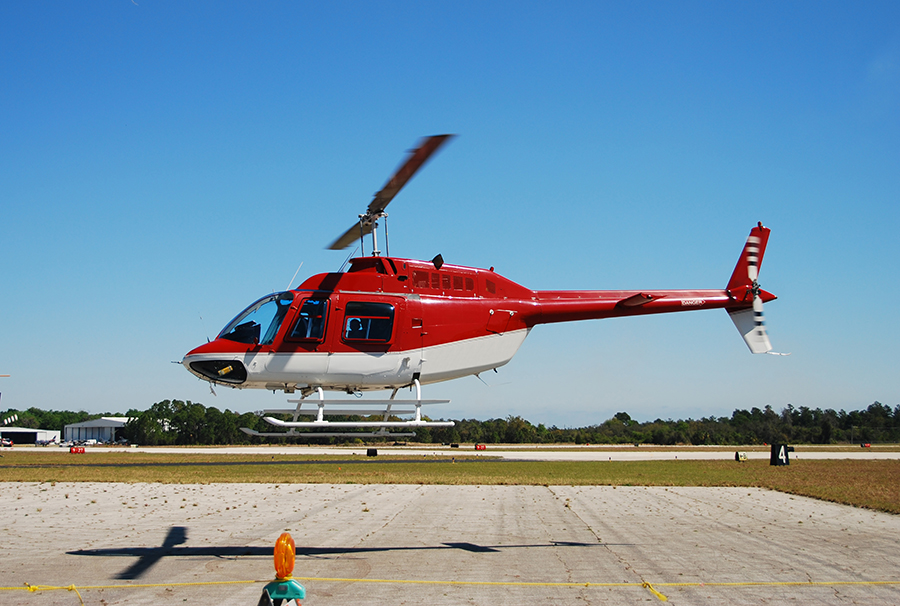
Landing is a very difficult part of airplane flying. It took me ages and ages to learn to land an airplane. It takes judgment, coordination, and above all, practice. You need to be able to estimate your distance from the runway and your height above it, and coordinate the use of the controls as you gradually descend. You must do all this while keeping up your airspeed, since slowing down is something that you most definitely do not want to do or the airplane could stall! It is particularly hard when you have gusty winds.
Compared with this, learning to land a helicopter is a piece of cake. The really good thing for the pilot is that you can slow the helicopter down before you land it. You use the collective to control your height, but you gradually reduce speed using the cyclic, until you come to a hover over the point where you want to be. They say that to land an airplane you throw yourself at the ground and miss. I’d add that to land a helicopter you just sedately approach the ground and put it down like a feather when you feel like it. It really is quite easy, and fixed-wing pilots are pleasantly surprised by just how easy it is to land a helicopter at an airfield.
Crosswind Landings
Any fixed-wing pilot will tell you that crosswind landings are one of the hardest things to learn. But this is not the case for a helicopter. Usually, you can just land into the wind, since helicopters don’t need runways. But if you need to follow a particular airfield’s circuit and perform a crosswind landing, you simply approach as usual, then turn the helicopter into the wind just as you land. It really is not that difficult.
Low Level Maneuvering
Flying a plane at low level is difficult and not very safe. But helicopters are designed for flying low, and can even ‘hover taxi’, ie move across the ground slowly at low level to get where they want to go. This is fun, easy, and it makes airplane pilots quite jealous!
Similarities And Differences Between Helicopter And Airplane Flying
There are a few other similarities and differences between airplane flying and helicopter flying that should be mentioned. This is particularly important for airplane pilots who are converting to helicopters.
Straight and Level Flying
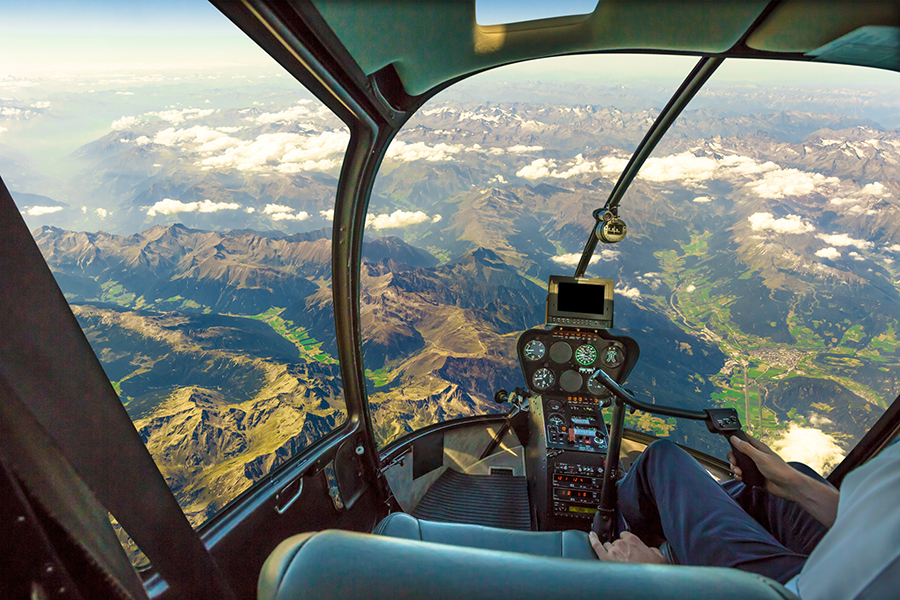
Upper air work, or simply flying straight and level at altitude, are very similar. The controls are slightly different, but they do much the same things, and most fixed-wing pilots find this part of helicopter flying very easy. In a fixed-wing aircraft, you adjust your attitude with the yoke or stick, use the rudder pedals to keep yourself in balance, and increase or decrease power when you want to climb or descend. In a helicopter things are much the same – the cyclic controls your attitude, the collective maintains your height, and the yaw pedals keep the aircraft in balance. Again, this is a bit of an over-simplification, but fixed-wing pilots are often pleasantly surprised to find that it really isn’t that hard to control a helicopter in the air, and the techniques used are fairly familiar. By the end of a trial lesson in either type of aircraft, many people have pretty much got the hang of flying straight and level, and some can even manage gentle turns or other basic maneuvers.
Preflight Checks
Whatever type of aircraft you fly, of course you don’t immediately leap into it, start the engine, and take off. You have to check everything first – the aircraft ‘walk-around’ or ‘A check’. Basically you ensure that nothing is missing or loose, and that all the controls move as they should.
However, for a small helicopter there is much more to check than for a simple fixed-wing aircraft. This is because a helicopter is a far more complex piece of machinery. I remember arriving at the airfield early in order to have time to do the ‘A’ check for a helicopter, and I really don’t recall ever doing that when I was learning to fly airplanes.
Emergencies
Dealing with most emergencies, such as flight in bad weather or radio failure for example, are fairly similar for fixed-wing aircraft and helicopters But what about other emergencies? The emergency which worries most inexperienced pilots more than anything else is the possibility of engine failure. Many people think that an engine failure in an airplane is bad enough, but you have time to put the aircraft into a glide and find a field in which to land. But in a helicopter? Many people believe that if the engine fails in a helicopter, there is nothing you can do.
Actually, there is plenty you can do in the case of helicopter engine failure. In some ways helicopter, ‘autorotations’ are easier than fixed-wing forced landings. If the engine fails in a helicopter, you simply lower the collective to enter what is called ‘autorotation’. Basically, the helicopter descends slowly, with the air coming from underneath keeping the rotors turning, rather like a falling sycamore leaf. You then just have to find a flat area on which to land the helicopter – and it doesn’t need to be very big. There is no looking for a large field on which to land, as airplane pilots have to do.
The fact that helicopters can be put down almost anywhere is a great boon in almost any other type of emergency too.
Conclusion
So to get back to the original question – are helicopters difficult to fly? Well, the answer is “not really”. As explained, some aspects of helicopter flying are quite difficult, but others are very easy. However, as a helicopter pilot, I rather enjoy having the reputation of being some kind of super-person, and I’m sure some of my colleagues do too. Perhaps that’s why we often keep quiet and don’t protest too much when people want to put us on a pedestal in this way. But to be honest we are not particularly special. We have merely had a lot of practice at flying helicopters. And like with most other skills, practice makes perfect.
Why, then, do helicopters have this reputation for being difficult to fly? It is probably because there are so many things you can do with them if you wish, which really are quite challenging. As already stated, you can land a helicopter practically anywhere. But every confined area landing is different, and making an approach to a small clearing surrounded by obstacles with a tailwind is not only not easy…I probably wouldn’t do it unless I absolutely had to! Some of the things that helicopters are designed to do if necessary are not simple maneuvers; there is no getting away from it. I heard of a pilot who had to balance a helicopter on one skid in order to rescue someone, and of course, this would be a very difficult and risky business.
So I’ll repeat it again – flying helicopters really is not that difficult. Therefore, if it’s something you want to do, I suggest you book yourself a demonstration flight so that you can have a go on the controls, and see if you like it. Who knows, it might change your life, as it did for me.

